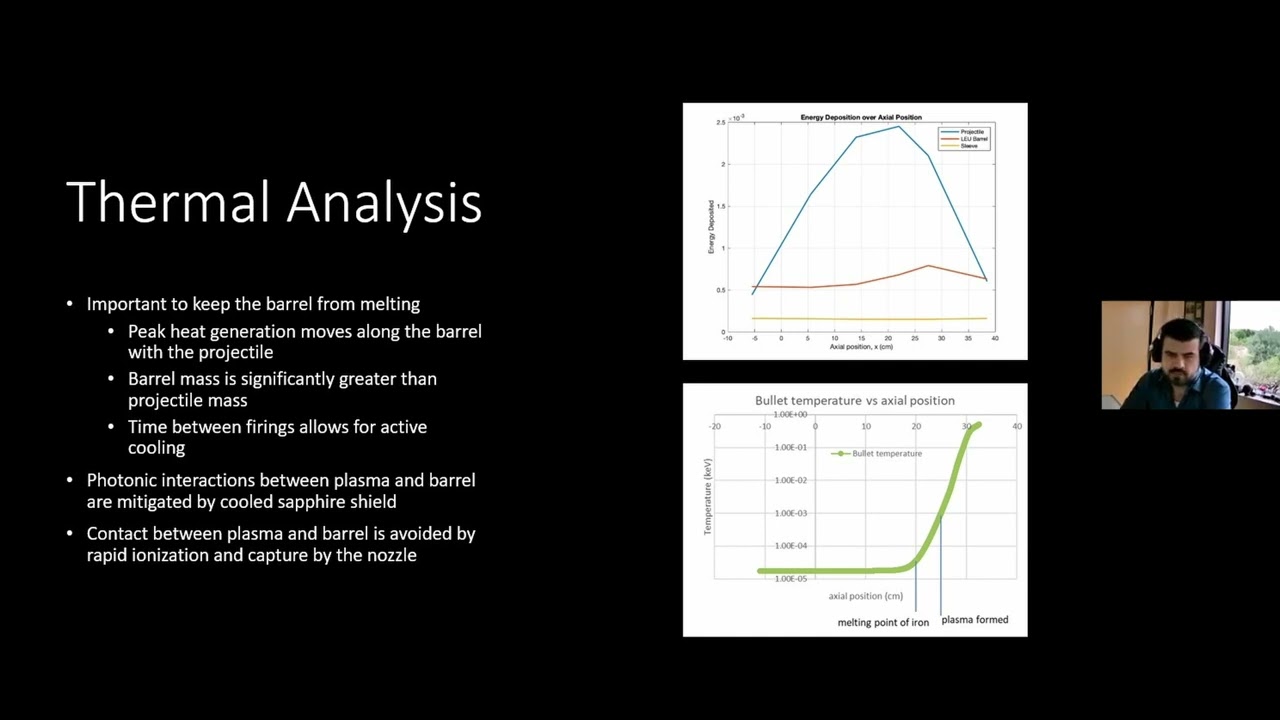This talk describes a study, done under a NASA NIAC grant, of a pulsed fission propulsion concept which electrically accelerates low-enriched uranium projectiles through a barrel of uranium with control drums arranged to produce a pulse of super-criticality at the point of exit. The resulting plasma is directed aft of the vehicle by a magnetic nozzle, producing (for the conceptual design) 100 kilonewton thrust with a specific impulse of 5000 seconds. Such an engine would permit 106 day round-trips to Mars with an 18.5 tonne payload and 20 days of stay on the surface.
The concept of fission propulsion with control over the region of criticality is similar in some ways to the nuclear salt-water rocket concept. The pulsed propulsion system also produces electrical power for itself and the spacecraft, and can generate electricity while the engine is not running.
The projectiles are simply lumps of low-enriched uranium and water moderator and are not fissile by themselves. Unlike the Project Orion drive, they are not nuclear bombs, and the plasma propulsion mechanism allows smoother and more efficient extraction of propulsion from the nuclear energy release.
